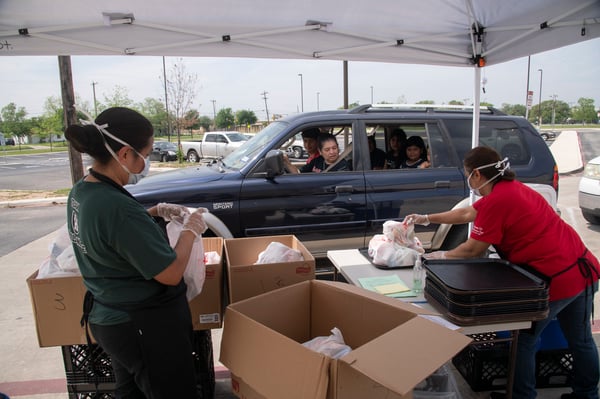With hiring freezes and layoffs on the line, many CSR teams are feeling the pressure to do more with less. The need to create and increase impact is still there, but the budget to expand your team or approve new grants is not.
That’s why we are creating this series called: “How to Increase Your Impact.” We know that adapting to a limited budget doesn’t mean you need to limit your impact. With the right strategy, tools, and resources, you can demonstrate and even extend your impact, without increasing your headcount or adding millions to your grant budget.

In the first article of our 3-part series, we’re going to talk about the power of focusing on the right data. Are you generating the best metrics to drive societal change, support decision making, and reach your goals? It’s easier than you may think, for both your team and your nonprofit partners.
Collect Better Data—Not More Data
How much data do you really need? To lighten the bureaucratic burden for you and your grantees, we recommend keeping three questions in mind:
- What do we need to measure? [Quick answer: Focus on impact.]
- When do we need to measure it? [Quick answer: The sooner, the better.]
- How can we be both inclusive and comprehensive? [Quick answer: With best available data.]
Measure What Really Matters—Impact
Companies typically invest a lot of time collecting and managing all kinds of metrics—such as dollars invested, hours volunteered, and equipment donated. While these metrics may indicate intent, they don’t measure the outcomes—the impact of these efforts. (Read the TOMS Shoes story to see why that can be a problem). Instead of measuring a flurry of process metrics (inputs and outputs), try focusing on one or two outcomes. This can vastly reduce the paperwork, time, and money that you and your grantees are investing into data collection and reporting.
Focusing on outcomes—instead of outputs like people reached or meals distributed—also benefits your grantees. When they can demonstrate the "essential ways they're changing lives," they can use these insights to further their impact (and their fundraising—which will then help further their impact more). This makes them more effective at serving the community, which also increases your impact as a funder. Win-win!
Embed Impact Measurement at the Start
While it’s never too late to start measuring impact, setting expectations early will save time, money, and resources for all involved. This will also help your nonprofit partners increase their capacity from the very beginning, helping them to create a measurement foundation for both your company and their other funders.
How True Impact can propel nonprofit growth: “The program does not look exactly the same as when we started because it's responding to great need. We had to learn from what we're seeing in the data, and True impact certainly helps us do that.” Schedule a demo with the True Impact team to get your CSR programs to outcomes in as little as three months.
Use Estimated Data When Direct Measurement Isn’t Possible
Sometimes your nonprofit partners are bettering society in ways that can’t be directly measured—or at least can’t be easily measured. Maybe they don’t have dedicated measurement staff. Or perhaps they’re focusing on systems and policy change and won’t know their results for years.

Data collection doesn’t have to be all-or-nothing. Instead of forgoing measurement entirely, or burdening your grantees with extra data collection, you can support your nonprofits on their measurement journey by collecting an estimation of their impact.
By using research studies, previous results, data sampling, and pilots—or as we like to call it, the “best available data available”—your grantees can paint a picture of their estimated impact. Going through this estimation process can also set a foundation for robust measurement in the future. Estimations also give funders a base beyond just pure speculation, which modestly starts to increase aggregated data quality.
A 2-minute video on how NOT to burden your nonprofits
Quality Over Quantity
Measurement for measurement’s sake, especially with budget cuts on the line, should never be the goal. When you collect the right data, you can show how your social impact is driving real change for your stakeholders, your company, and the world. Empowered by this knowledge, you and your CSR team can use what you’ve learned to invest more strategically and make data-driven decisions, bettering society for all along the way.
Not sure how to get started? Schedule a free consultation with our team to get actionable advice on collecting the best data for your CSR programs.
In the second part of the “How to Increase Your Impact” series, we’ll show you how to maximize your return on investment (both ROI and SROI) to give with purpose. Stay tuned!


.png)
